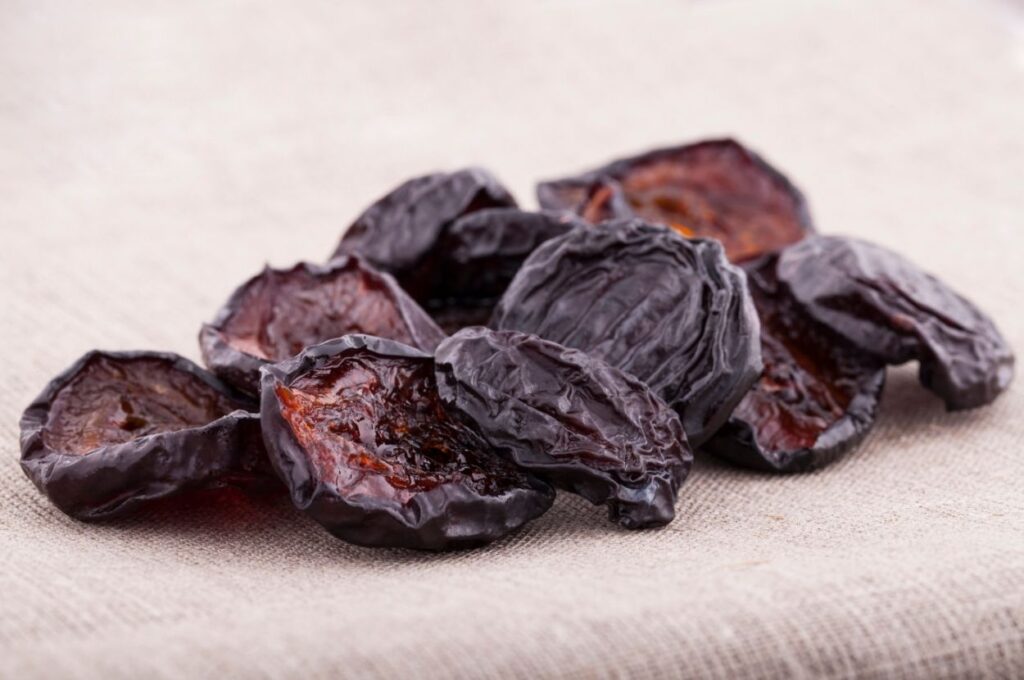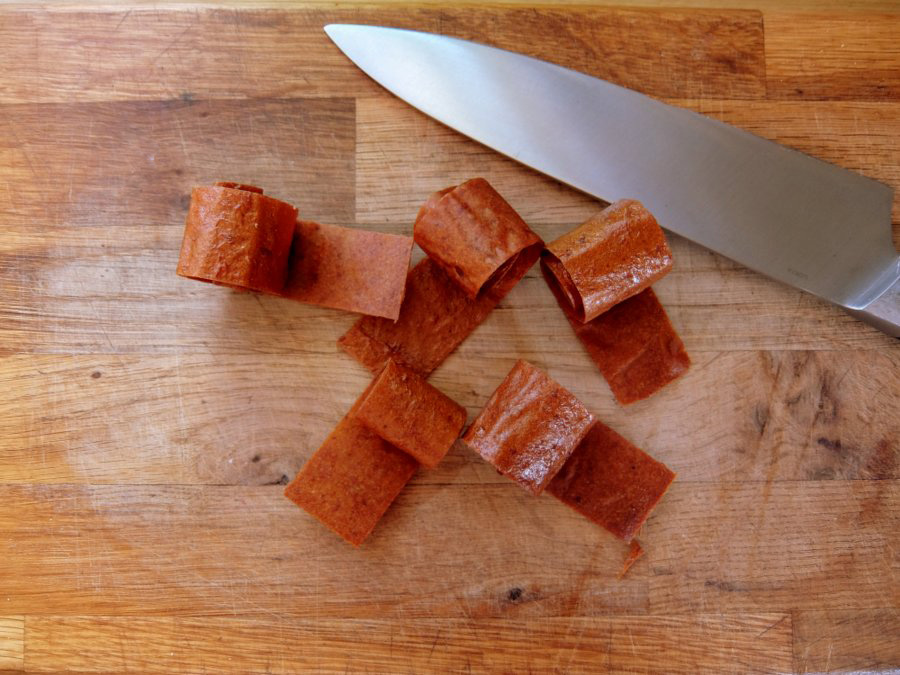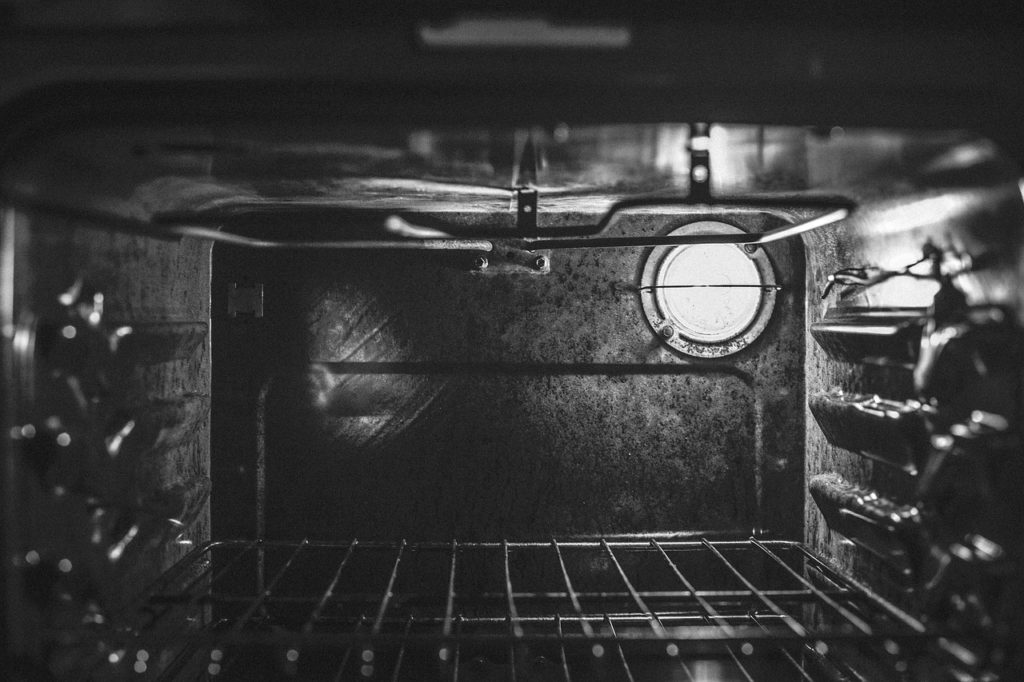When plums are in season, especially when you have a tree there tends to be a big glut all at the same time. Drying plums is a great way to put some aside to be enjoyed later on and despite the reputation that prunes have dried plums are full of nutrients and the flavour is massively boosted.
There are thousands of varieties of plums that are cultivated and sold so whether you have a tree or the local market has them on sale you can try dehydrating plums yourself.
Table of Contents
Are Dried Plums The Same As Prunes?
Prunes are dried plums. They are the same and prunes are usually made with a plum variety called “Improved French”
Any variety of plum can be dried or related fruits like damsons and greengages. You might expect dried plums to look like the commercially available prunes you can buy at the store but because of the wide variety of plums that are grown your own dehydrated plums might look and taste different.
Lighter Victoria plums will not be as dark as prunes from the store, the flesh of red plums will be maintained to a certain extent in the finished dehydrated plum.
Preparing Plums For Dehydrating
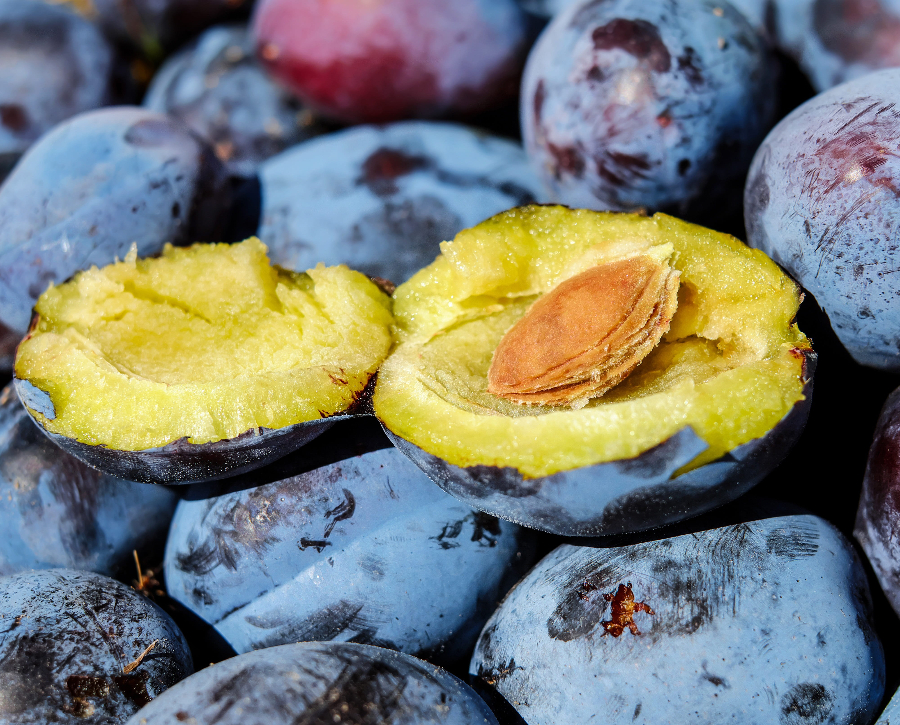
As I said above, any plum can be dried but depending on the variety you might want to prepare them slightly differently. This difference is due to whether the stones in the plums are easy to remove or not.
Freestone Plums
Freestone Plums are those whose pits are easily removed from the flesh.
When you slice all around the stone and give it a twist the plum will either easily split in half and reveal the stone or it won’t.
If the stone is easy to remove you can halve each of the plums and dehydrate the fruit in halves.
If you are having trouble removing the stone then you probably have a clingstone variety of plum.
Clingstone Plums
These plums have a stone that is tightly connected to the flesh. When you slice the plum it won’t be easy to remove the stone and you are more than likely to end up mangling the plum.
If you have a variety of plum where you cannot easily remove the stone you have two options:
- Dehydrate the plums with the stones in
- Slice around the stones carefully cutting from the seam of the plum.
If the plums are large then cutting either side of the stone and losing a little of the fruit is acceptable.
If the plums are small such as damsons or gages you may be better off drying the plums whole.
Drying Plums Whole
If the plums are fairly small and a clingstone variety then drying the plums whole is an option.
To dehydrate plums whole you first have to break the skins which allow the fruit to dehydrate evenly and the skin will not act as a barrier to drying.
To break the skins of the plums it is a simple case of immersing the fruit in boiling water for 330 seconds before removing them and dropping the plums into ice water. Once cold the plums can be removed from the water and dried on a paper towel.
Blanching the plums whole like this will break the outer skin and drying will be much more successful.
How To Dehydrate Plums In A Dehydrator
Dehydrating plums in a dehydrator is the quickest and most efficient way of doing it.
There is no pretreatment necessary the plums simply need to be sliced and the stone removed. The halves can be quartered if the plum is quite large or left in halves, if drying the plums whole then read the previous section on how to prepare the plums.
Once cut, arrange the plums on the trays of a dehydrator, leaving space around each piece for air flow.
Stack the trays in the dehydrator and set to a temperature of around 50C / 120F. Check the plums after around 6 – 8 hours and keep on checking every 30 minutes or so until dried.
How To Dehydrate Plums In The Oven
Dehydrating plums in the oven is pretty much the same as a dehydrator but it will most likely take longer and is less efficient.
I would recommend investing in some racks for your oven as these will allow airflow and moisture to escape from all side compared to trays.
Arrange the prepared plum slices or whole plums evenly over the racks. Set the oven to the lowest temperature ideally, 50C / 120F and make sure the fan is on to increase airflow (keeping the door ajar can help boost airflow and speed drying).
Rotate racks every couple of hours and check the plums progress after around 8 hours.
What Temperature To Dehydrate Plums?
If you are able to set the temperature on your dehydrator then a setting between 45 – 65C / 110 – 135F is ideal.
This temperature is low enough to maintain nutrients and prevent the outside drying too quickly which prevents the inside from drying.
How Long Does It Take To Dry Plums?
Plums can be quite juicy and high in sugar which means it can take a bit longer for them to fully dehydrate.
If you are drying halves or whole plums then it will take longer to dry them than if you slice the halves into smaller pieces.
Plum halves can take between 8 – 12 hours to dehydrate fully in a dehydrator. An oven will likely take a little longer.
If you want to speed the process up, slice halves into smaller pieces.
Check the progress regularly toward the end of the process and rotate or turn the plums to aid even drying.
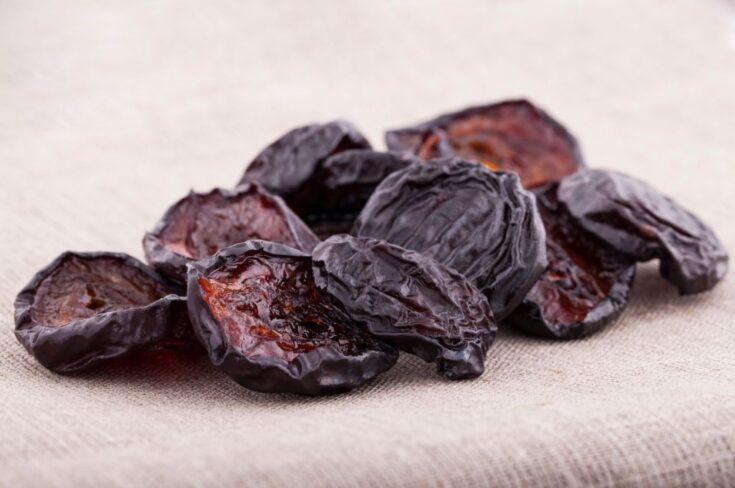
Dehydrating Plums In An Oven Or Dehydrator
A sweet, delicious snack or treat and the only ingredient you need is plums!
Ingredients
- 1kg Plums
Instructions
How Do You Dry Plums In A Dehydrator?
- Once halved and the stone removed to ensure equal drying it is really simple to dry the plums in a dehydrator.
- Arrange the plum halves in the dehydrator racks with plenty of space between to allow even airflow.
- The racks can then be arranged in the dehydrator ready to start drying.
- A dehydrator set at around 50C / 120F will take around 8 - 12 hours to dehydrate the plums.
How To Dehydrate in the Oven
- Using an oven to dehydrate plums is not quite as quick or efficient as using a dehydrator but still very simple.
- You will need a few racks to arrange the plums on allowing room for warm air to circulate around the fruit.
- Set your oven to its lowest temperature preferably with the fan on. If you don't have a fan oven prop the door open to allow air circulation.
Recommended Products
As an Amazon Associate and member of other affiliate programs, I earn from qualifying purchases.
Nutrition Information:
Yield:
20Serving Size:
1Amount Per Serving: Calories: 23Total Fat: 0gSaturated Fat: 0gTrans Fat: 0gUnsaturated Fat: 0gCholesterol: 0mgSodium: 0mgCarbohydrates: 6gFiber: 1gSugar: 5gProtein: 0g
